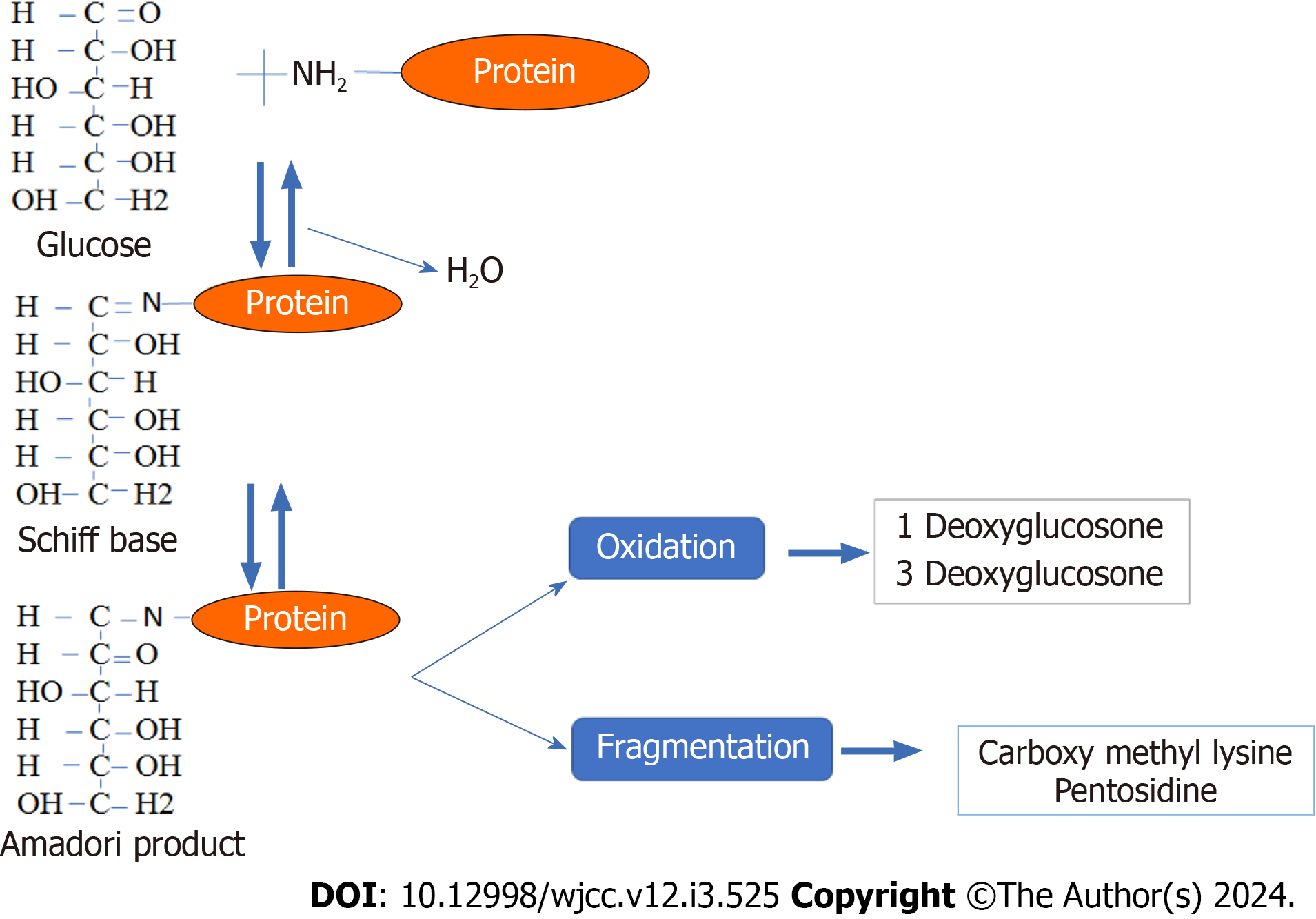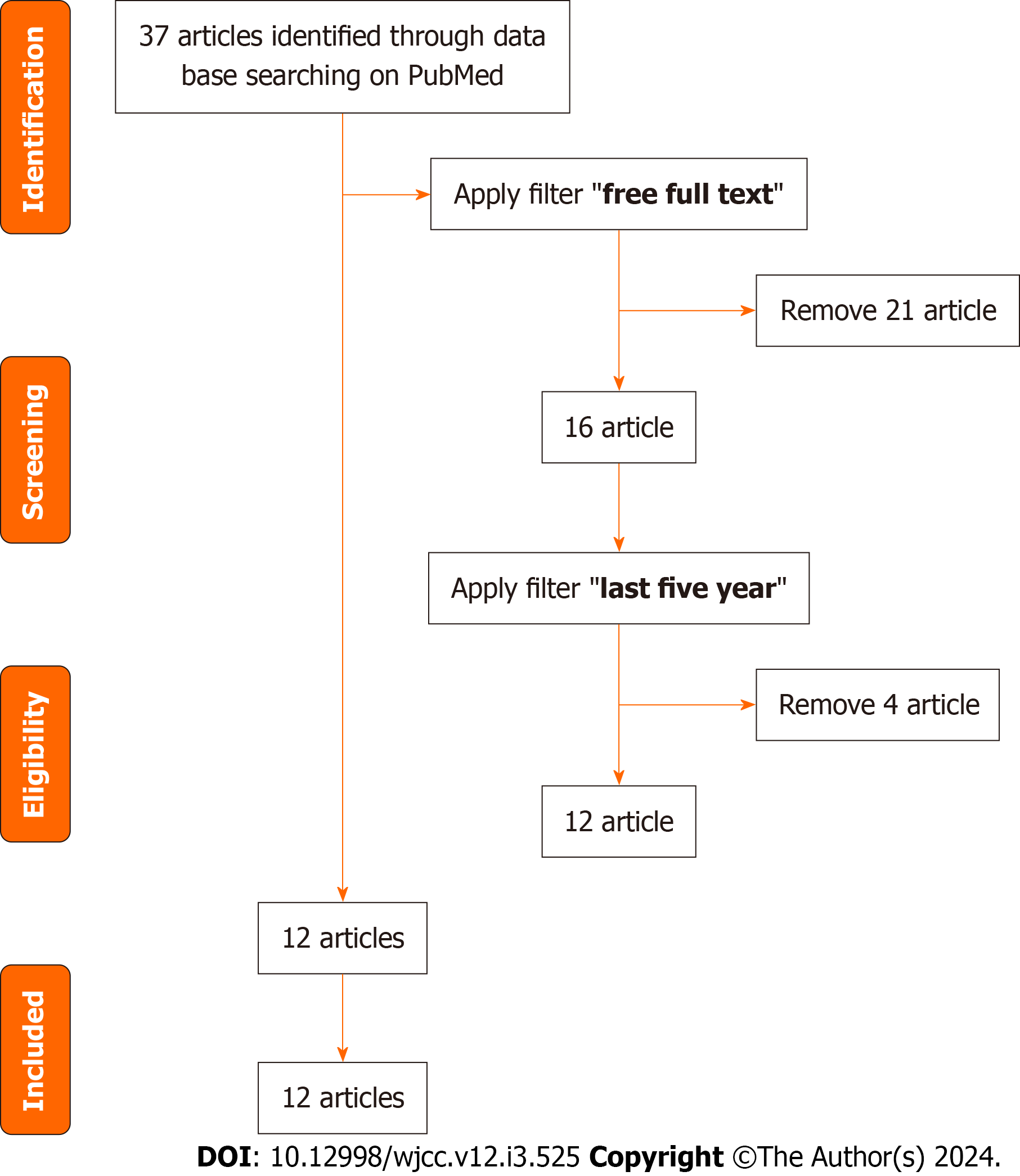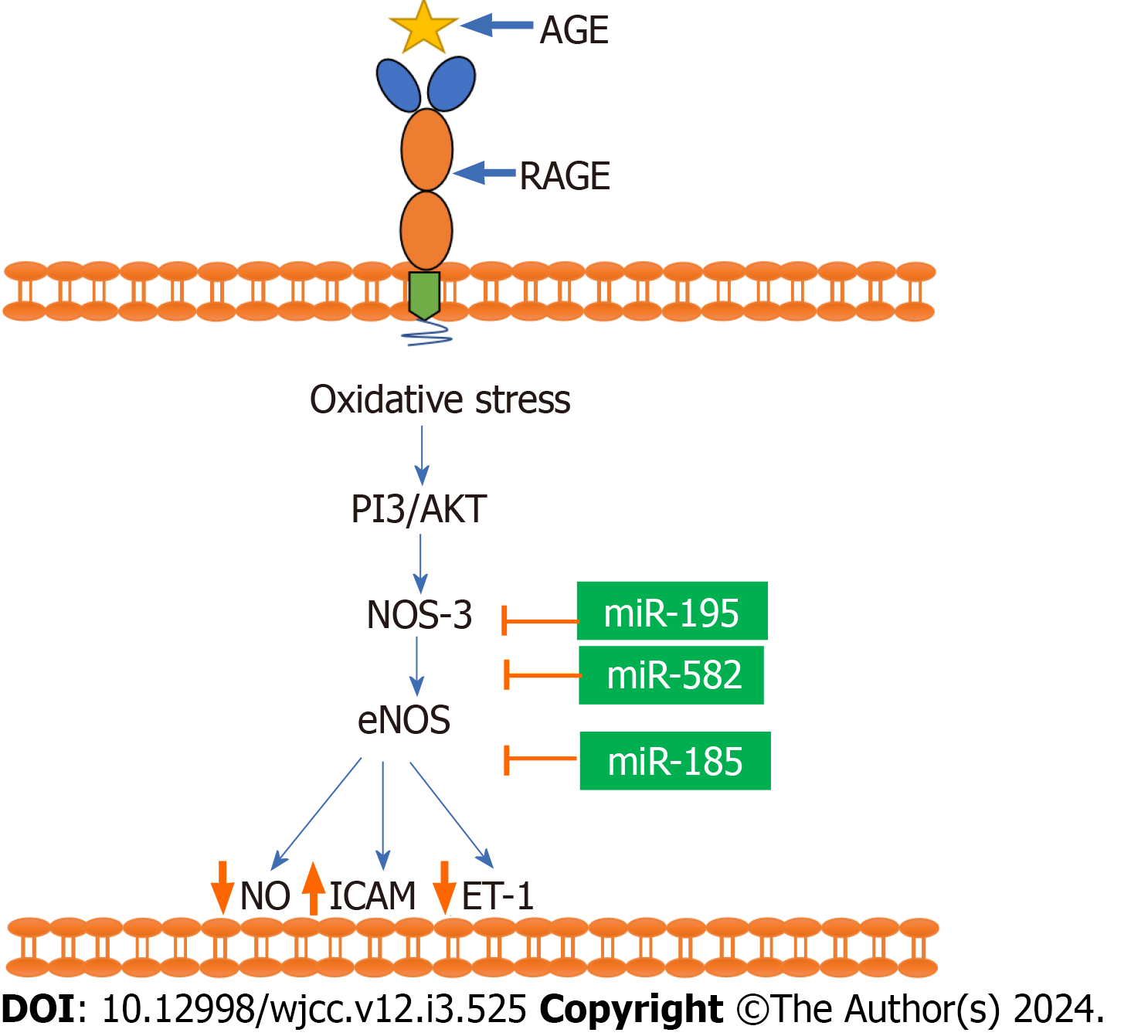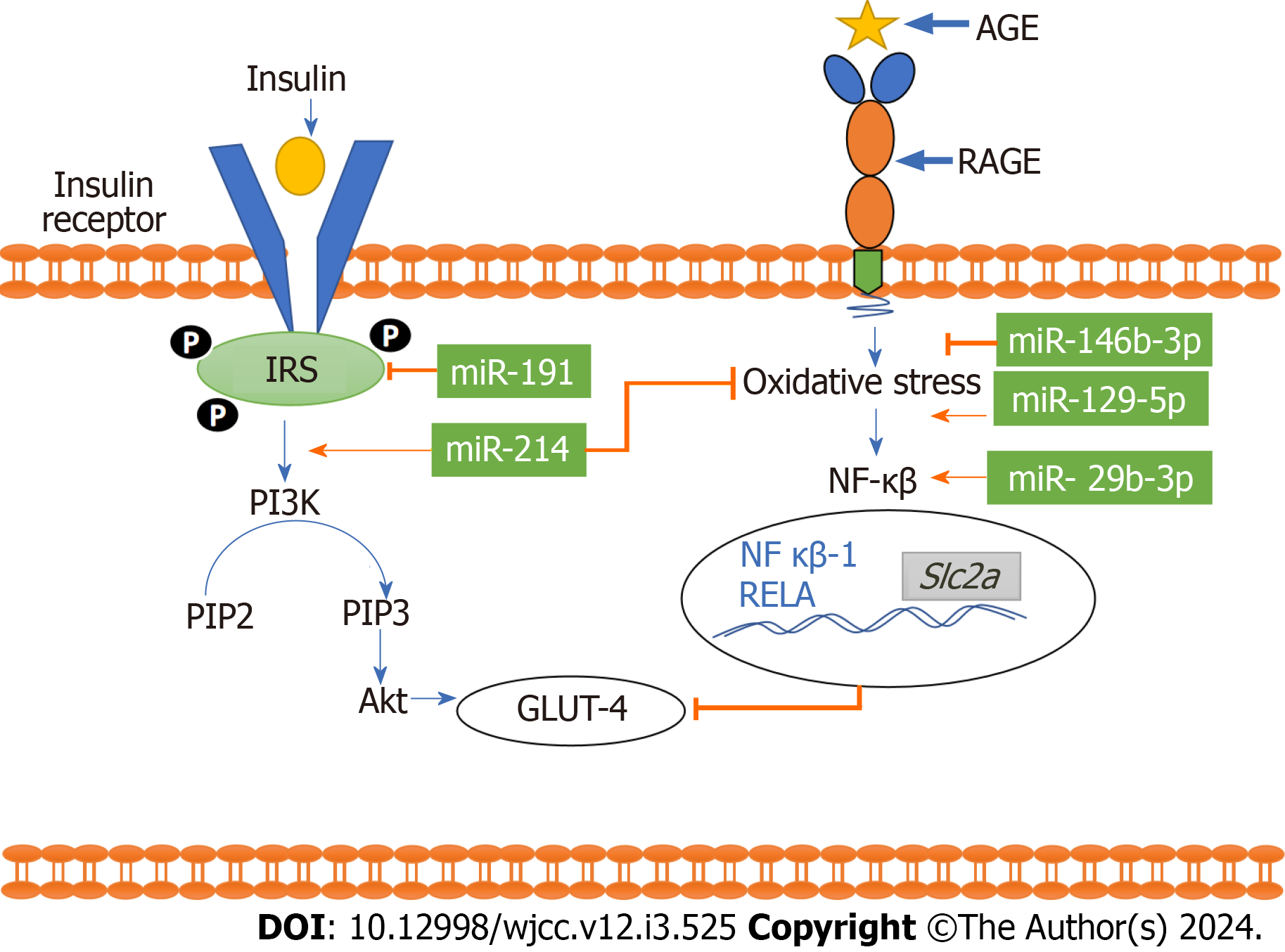Copyright
©The Author(s) 2024.
World J Clin Cases. Jan 26, 2024; 12(3): 525-537
Published online Jan 26, 2024. doi: 10.12998/wjcc.v12.i3.525
Published online Jan 26, 2024. doi: 10.12998/wjcc.v12.i3.525
Figure 1 Advanced glycation end products formation.
Reaction between the carbonyl group of reducing sugar and the amino group of proteins and lipids via a Schiff base reaction cascade, followed by amadori rearrangement and oxidative modification.
Figure 2 PRISMA flow diagram of study selection process for preclinical and clinical evidence.
Figure 3 MiRNA regulation in the advanced glycation end product/receptor of advanced glycation end products activated nuclear factor pathway.
Advanced glycation end product - receptor of advanced glycation end product interaction activates the nuclear factor pathway, which is inhibited by miR-200b, miR-200c, and miR-471-3p and upregulated by miR-124 and miR-146a. AGE: Advanced glycation end product; RAGE: Receptor of advanced glycation end product; MAPK: Mitogen-activated protein kinases; NF-κB: Nuclear factor kappa beta; TNF-α: Tumor necrosis factor.
Figure 4 Interaction of advanced glycation end product and receptor of advanced glycation end product activates the protein kinase C pathway: The interaction of advanced glycation end product and advanced glycation end product activates the nuclear factor pathway and damages DNA, causing PARP-1 to be released and GAPDH to be inhibited.
The inhibition of GAPDH affects the glycolysis pathway and increases fatty acid synthesis. This increased synthesis of fatty acids activates diacyl glycerol in the cell membrane, which is a potent activator of protein kinase C (PKC). Increased PKC promotes synthesis of NADPH oxidase, super oxide and oxidative stress and ultimately decreases cellular nitric oxide. In this pathway, miRNA 210, miR-25, and miR-21-3p inhibit NADPH oxidase and oxidative stress. Apart from that, miR 92a promotes the expression of the antioxidant HO-1. AGE: Advanced glycation end product; RAGE: Receptor of advanced glycation end product; NF-κB: Nuclear factor kappa beta.
Figure 5 Regulation of miRNA in the nitric oxide pathway: The interaction of advanced glycation end product and receptor of advanced glycation end product affects the availability of Nitric Oxide via inhibition of eNOS.
miR-195, miR-582, and miR-182 all inhibit AGE/RAGE-mediated eNOS alterations and nitric oxide production. AGE: Advanced glycation end product; RAGE: Receptor of advanced glycation end product; NF-κB: Nuclear factor kappa beta; NO: Nitric oxide.
Figure 6 Functional role of miRNA in the advanced glycation end product/receptor of advanced glycation end products activated phosphoinositide 3-kinase pathway.
The advanced glycation end product/receptor of advanced glycation end products -activated nuclear factor (NF) pathway inhibits GLUT-4 release from the cellular membrane. miR-129-5p, miR-29b-3p upregulate the pathway. However, miR-191, miR-146b-3p and miR-191 show an inhibitory effect. Furthermore, miR 214 increases GLUT-4 expression by simultaneously upregulating the PI3k/AKT pathway and inhibiting the NF- pathway. AGE: Advanced glycation end product; RAGE: Receptor of advanced glycation end product; NF-κB: Nuclear factor kappa beta.
- Citation: Shrivastav D, Singh DD. Emerging roles of microRNAs as diagnostics and potential therapeutic interest in type 2 diabetes mellitus. World J Clin Cases 2024; 12(3): 525-537
- URL: https://www.wjgnet.com/2307-8960/full/v12/i3/525.htm
- DOI: https://dx.doi.org/10.12998/wjcc.v12.i3.525














